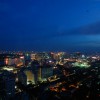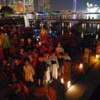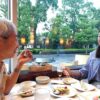Interviewer: Takafumi Kubo
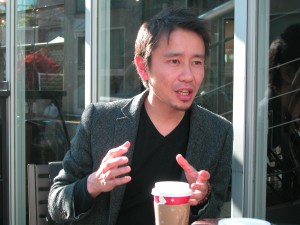
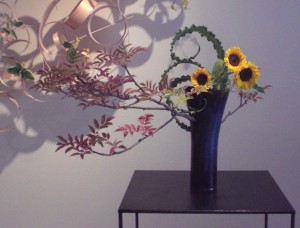
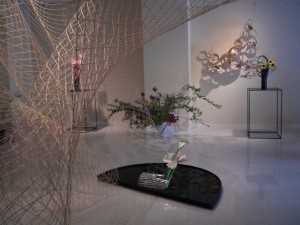
Mende : I heard that you practice Ikebana, or Japanese flower arrangement. What style are you learning? It’s amazing that you find time when work is so busy.
Kubo : I am learning the Sogetsu style of Ikebana. We work with not only classical flower types, but also pursue innovative and unique expressions with flowers. It is very interesting. I also had a piece displayed at an exhibit.
Mende : I don’t think I got an invitation.
Kubo : Sorry about that. Working with flowers is very invigorating. I feel like a student again.
Mende : What do you learn at your lessons?
Kubo : Generally, a basic flower arrangement is arranged with three branches and flowers. The three branches are labeled, Shin, Soe, and Hikae. Depending on the length of a branch, angle of insertion, how one displays the water, how branches are hung, and other factors, each arrangement looks different. So even if we all used the same flowers, there would never be two arrangements that are the same. So even if one is not very good, if they fill the requirements, it is a flower arrangement. It is very interesting.
What do you do at your Shinnai lessons (Japanese theatrical music lessons)?
Mende : The teacher for our Shinnai lessons is an older gentleman and we basically just mimic what he sing-says. So we basically try to come as close as we can to what and how our teacher does everything. So, it is a little bit different than ikebana.
Kubo : The topic of conversation has turned to our hobbies. What I really wanted to talk about is lighting and flower arrangements. For example, depending on the type of flower, finding the right combination of lighting factors to illuminate an arrangement such as, type of light source, color temperature, or angles of exposure, sounds like a very interesting pursuit. Kind of like how you seek to find the perfect lighting for different architectural structures.
Mende : Ikebana seems to resemble architecture in terms of a physical end product. When I was just starting out, I did the lighting for one of Mr. Sofu Teshigahara`s installations. He used mostly bamboo, so it resembled something similar to architecture. I put a lot of effort into trying to express the form in a 3-dimensional manner. Not just flowers, but coloring is also important when displaying, say, pottery. I also worked on the lighting for Mr. Seimei Tsuji`s exhibit, which I put a tremendous amount of effort into beautifully presenting the colors of the fired pottery.
Kubo : Whether the object to be illuminated is architecture, flowers, or pottery the important question in lighting design is what is most important to the subject? What do you want people to see or feel? Lighting design is not a material object, but rather designing an atmosphere or a suggestion of something. Flower arrangement is the opposite. We are designing something physical. Have you ever thought of using light fixtures to create a sculptural design?
Mende : No, not really, but I think I could really put something together. However, when looking at the collections of some of the finest sculptors I don`t think I stand a chance. You said flower arrangement is a physical design, but you don’t do pre-sketches or drafts before starting do you? It seems like it is a very spontaneous process, like you are creating a world or air of your own in that moment.
Kubo : Well, maybe so. At the end of a lighting design project we go on-site to do final focusing. Focusing is a very impromptu manner. Flower arrangement might be similar to this.
Mende : Yes, maybe so. Just like in the way you cut and arrange flowers, each fixture, one by one, is aligned, adjusted, and aimed at the subject to illuminate. Yes, this manner might be similar.
Kubo : I really like flower arrangement, but I think I understand the enjoyment of lighting design a little bit more. Thank you for our talk today.






